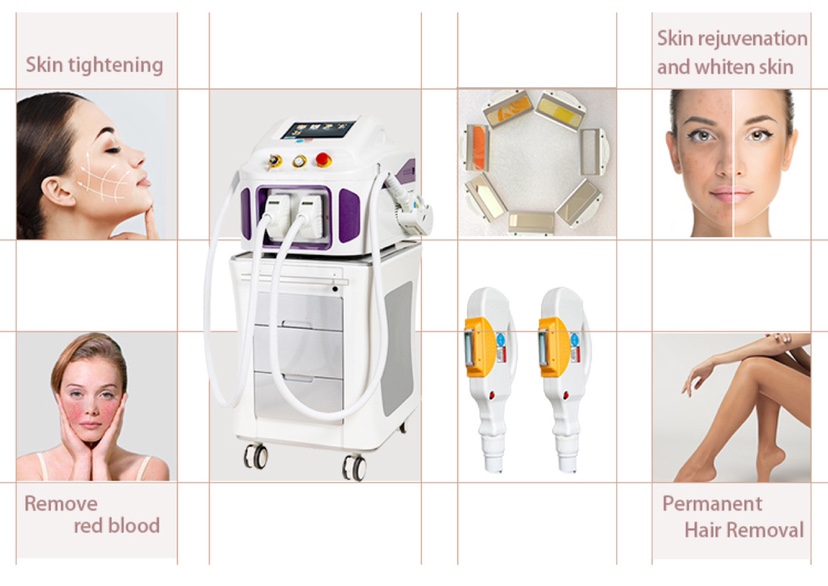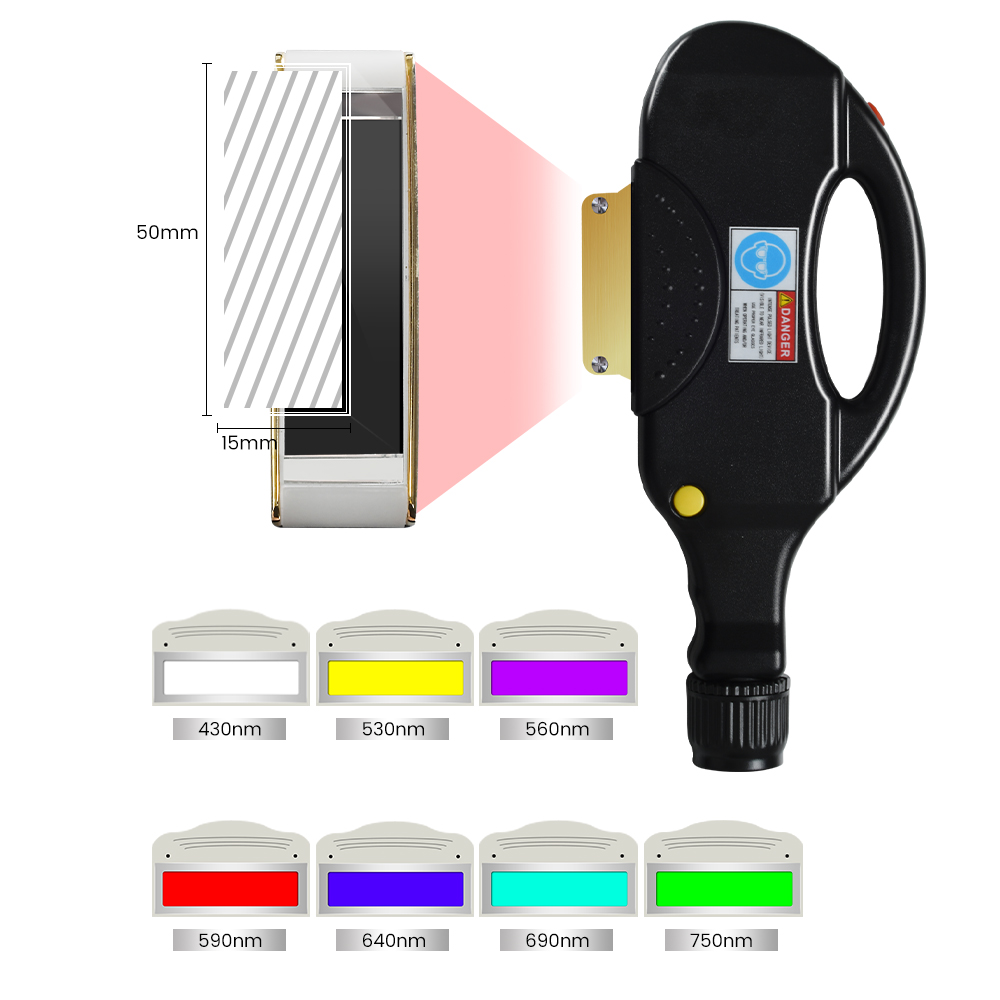Elevate Your Salon Experience with EMS Pelvic Chair: A Game-Changer for Beauty Professionals
November 26, 2025Exploring the Differences Between IPL and DPL in Skin Treatment
July 09,2024
In the realm of dermatology and cosmetic skincare, IPL (Intense Pulsed Light) and DPL (Dynamic Pulse Light) are two advanced technologies that have revolutionized the way practitioners approach various skin conditions. Despite their similar acronyms, these treatments differ significantly in terms of their mechanisms, applications, and effectiveness. This article delves into the nuances of IPL and DPL, offering insights into their origins, methodologies, and practical implications for patients seeking skin rejuvenation and therapeutic solutions.
1. Origins and Technological Basis
Intense Pulsed Light (IPL): IPL, originally developed in the late 1990s, harnesses the power of broad-spectrum light pulses to target specific chromophores in the skin. These pulses of light are delivered in a range of wavelengths, allowing practitioners to customize treatments based on the patient’s skin type and the condition being addressed. IPL technology evolved from earlier laser technologies and is known for its versatility in treating a variety of skin issues, including pigmentation irregularities, vascular lesions, and signs of aging.
The effectiveness of IPL treatments stems from the selective absorption of light energy by melanin (pigment) or hemoglobin (blood vessels) in the skin, leading to targeted destruction or coagulation of unwanted tissue. This makes IPL particularly effective for conditions such as sun spots, rosacea, and facial flushing.

Dynamic Pulse Light (DPL): DPL, a more recent innovation, shares similarities with IPL but incorporates dynamic control of pulse parameters to enhance treatment outcomes. Developed to address some limitations of traditional IPL systems, DPL technology allows for precise adjustment of pulse duration, interval, and energy levels during each treatment session. This dynamic approach is designed to optimize treatment efficacy while minimizing discomfort and downtime for patients.
DPL systems typically utilize advanced cooling mechanisms and real-time feedback sensors to ensure consistent energy delivery and patient safety. The flexibility of DPL technology makes it suitable for treating a wide range of skin conditions with varying degrees of severity and depth.
2. Treatment Modalities and Applications
Intense Pulsed Light (IPL): IPL treatments are versatile and can be tailored to address specific concerns such as:
- Pigmentation Issues: IPL effectively targets excess melanin in the skin, reducing the appearance of freckles, sun spots, and melasma.
- Vascular Conditions: IPL can treat vascular lesions like spider veins, broken capillaries, and facial redness caused by conditions like rosacea.
- Hair Removal: IPL systems equipped with appropriate filters can also be used for hair reduction by targeting the pigment in hair follicles.
The non-invasive nature of IPL treatments allows for quick recovery times and minimal risk of complications, making them popular choices for patients seeking effective skin rejuvenation solutions.

Dynamic Pulse Light (DPL): DPL treatments build upon the principles of IPL but offer enhanced control and precision, particularly beneficial for:
- Fine Lines and Wrinkles: DPL systems can target deeper layers of the skin to stimulate collagen production, improving skin texture and reducing the appearance of wrinkles.
- Acne Management: DPL technology can help reduce acne breakouts and inflammation by targeting sebaceous glands and bacteria within the skin.
- Skin Tightening: By delivering controlled pulses of light energy, DPL treatments can promote skin tightening and firmness, addressing laxity and sagging.
The dynamic pulse capabilities of DPL systems enable practitioners to adjust treatment parameters in real-time, ensuring optimal results for patients with diverse skin types and concerns.
3. Effectiveness and Patient Experience
Intense Pulsed Light (IPL): IPL treatments are renowned for their effectiveness in achieving noticeable improvements in skin tone, texture, and clarity. Patients typically experience minimal discomfort during IPL sessions, often described as a sensation similar to a rubber band snapping against the skin. Multiple sessions may be required to achieve desired results, depending on the severity of the condition being treated.
Post-treatment care for IPL often involves sun protection and gentle skincare to enhance and maintain the results achieved.
Dynamic Pulse Light (DPL): DPL treatments aim to provide enhanced efficacy and patient comfort compared to traditional IPL systems. The dynamic control of pulse parameters allows for more precise targeting of specific skin concerns while minimizing the risk of adverse effects such as burns or pigmentation changes.
Patients undergoing DPL treatments may notice gradual improvements in their skin’s appearance over several weeks, with optimal results typically achieved after a series of sessions spaced at intervals recommended by their healthcare provider.
4. Considerations for Treatment Selection and Safety
Intense Pulsed Light (IPL): When considering IPL treatments, patients should consult with qualified skincare professionals who can assess their skin condition and customize treatment plans accordingly. Factors such as skin type, medical history, and desired outcomes will influence the choice of IPL parameters and treatment protocols.
Ensuring proper sun protection and adherence to post-treatment care guidelines are essential for maximizing the benefits of IPL while minimizing potential risks.
Dynamic Pulse Light (DPL): DPL treatments offer a promising alternative or complement to traditional IPL therapies, particularly for patients seeking advanced skincare solutions with enhanced precision and control. The dynamic pulse technology of DPL systems allows for greater customization and optimization of treatment outcomes, making them suitable for a wide range of aesthetic and therapeutic applications.
Patients considering DPL treatments should seek consultation with experienced dermatologists or skincare specialists who can provide comprehensive evaluation and guidance based on individual skin needs and treatment goals.
Conclusion
In conclusion, while both IPL and DPL technologies share the common goal of improving skin health and appearance, they differ in their technological approaches, treatment modalities, and clinical applications. IPL remains a versatile and widely utilized option for addressing various skin concerns, while DPL represents an evolution in light-based therapies with enhanced control and precision.
Understanding the distinctions between IPL and DPL empowers patients to make informed decisions about their skincare treatments, guided by the expertise of qualified healthcare providers. As these technologies continue to evolve, their impact on dermatology and cosmetic skincare will undoubtedly shape the future of non-invasive aesthetic treatments and therapeutic interventions for years to come.